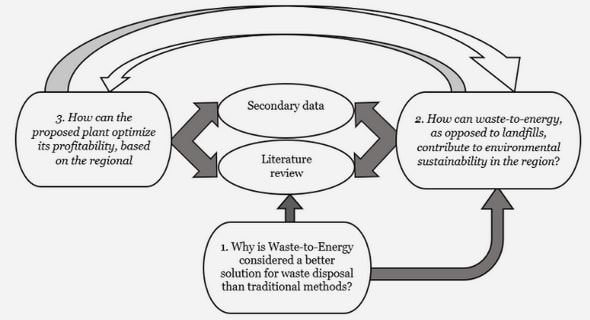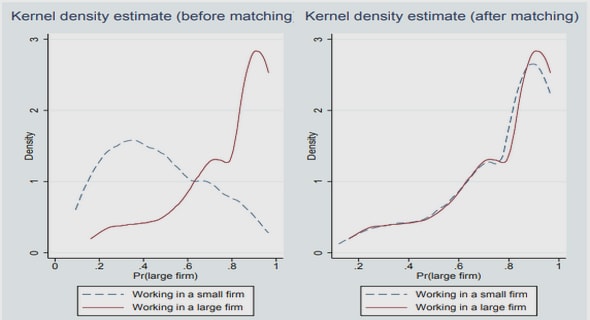Get Complete Project Material File(s) Now! »
Chapter Three Research design
Introduction
The purpose of this study was to investigate the effectiveness of learner support services to distance learners in the DPE programme. This puzzle drove me to record the participants’ perceptions, views and opinions about the contribution of such services to distance learners’ progress and completion. In this chapter, I describe the research design which I chose to help me solve the academic puzzle. I give the rationale for using a qualitative research approach, the research context and the criteria for selecting the research sample, the methods I used for data collection, the ethical considerations involved, and the logistics I put in place to ensure the trustworthiness, credibility and dependability of the findings. I also offer a justification for choosing content analysis as the most suitable strategy for data analysis and interpretation. The research design enabled me to collect data to answer the research question which intended to understand: The effectiveness of learner support services to distance learners in aprimary education diploma in Botswana. In seeking solutions to this academic puzzle, I formulated four research questions:
- What are the strengths and weaknesses of learner support services in the DPE programme?
- What are distance learners’ perceptions about the effectiveness of learner support services in the DPE programme?
- How do tutors and other stakeholders perceive their roles and responsibilities in the provision of learner support services in the DPE programme?
- What barriers and opportunities exist in the implementation of effective learner support services in the DPE programme?
In the next section, I discuss the traditional research approaches and give a justification for why I found the qualitative interpretative approach the most suitable for this study.
Research approaches
Two types of approaches are used in educational research, the quantitative or positivist approach and the qualitative or interpretivist approach (Cohen, Manion & Morrison, 2000; Merriam, 1998; Patton, 2002). The qualitative-interpretivist approach posits that knowledge and reality are socially constructed and are given meaning and interpretation by people through the sharing of experiences (Beck & Kosnik, 2006; Creswell, 1998; Driscoll & Wood, 2007; Easterby-Smith, Thorpe & Jackson, 2008). Further, this approach is characterised by the concern for the individual and the subjective human experience, seeing reality as it is experienced by people in real and natural settings. As such, it seeks to interpret reality by drawing on participants’ own experiences of the situations in which they live (Creswell, 1998). The interpretivist approach is therefore context-specific, applying techniques and processes for which meanings cannot always be experimentally examined or measured in terms of quantity, amount, intensity or frequency, as is the case in the positivist paradigm (Denzin & Lincoln, 2005).
I chose the interpretivist approach because my research question focused on participants’ perceptions about the contribution of learner support services to distance learners’ progress and programme completion in the DPE programme in Botswana. My aim as a researcher was to facilitate the construction of knowledge from the participants’ perspectives, as they understood the phenomenon under investigation in their natural settings. I needed to interact with the participants and listen carefully to them in order to record and explore their perceptions, attitudes, opinions and experiences with the support services in the DPE programme, since they were the primary source of data. It was from this perspective that in the theoretical framework in Chapter 2, (§ 2.5), I made a case for learner support services which are designed to develop independent learners who would be capable of constructing their own meanings, as contended in the theories of ODL and constructivism, discussed in detail in sections (2.5.1 to 2.5.5).
The interpretive approach contends that knowledge can be presented in different ways, other than as a single objective reality as in the case of positivist approach (Creswell, 2003; Denzin & Lincoln, 2000; Lincoln & Guba, 1985; Patton, 2002). Further, interpretivists believe that reality is subjective and determined by people, rather than by objective and external factors. As such it cannot be measured objectively through the proving of hypotheses and statistical measurements, except with rigour in research methods (Patton, 2002). The interpretivist approach focuses on how people make sense of the world and uses the case study as the most natural mode of reporting their interpretations and the meanings they derive from their life situations (Lincoln & Guba, 1985). It was on this assumption that I selected the case study approach and used semi-structured interview questions to collect data in both individual and group interviews. I used fewer respondents than would have been the case had I taken a quantitative approach, which depends on larger samples. In adopting an interpretivist approach, I assumed the role of a human instrument and became part of the learning process. I recorded the what, where, why, when and how of the phenomenon by collecting in-depth data from a small but information-rich sample of participants, which as indicated in the reviewed literature, renders the issue of numbers meaningless (Creswell, 2003; Denzin & Lincoln, 2005; Trochim, 2006; Voeten, 2006).
I did not select the quantitative or the positivist research paradigm because it would not have answered the research question. The quantitative-positivist approach assumes that knowledge is objective and that its judgment is based on the observation of external reality, with the researcher playing the part of an observer (Patton, 2002). The positivist view defines life in measurable terms, rather than in terms of inner experiences, and uses quantification, experimental designs and statistical measurements to test pre-formulated hypotheses (Cohen et al., 2007; Hall & Hall, 2004; Jones, Vasti & Arminio 2006). Reality is perceived as existing independently of the observer (researcher) who observes social phenomena objectively and proceeds through the application of laws that are deduced from a hypothesis to confirm or refute the truth of a proposition (Creswell, 1998). In the interpretivist approach, however, the researcher interacts with the knower (the participants) in an inseparable manner (Cohen et al., 2007). To generalise findings on social behaviour in the positivist approach, it is necessary to select samples of sufficient size from which inferences about the wider population can be drawn (Patton, 2002).
The positivist and interpretivist research approaches seem to agree that reality exists, but differs in the methodology for investigating this reality. The positivist approach treats reality as objective and external, while the interpretivist approach stresses subjectivity and multiple realities. The present study sought an in-depth understanding of participants’ perceptions of the contribution of learner support services to distance learners’ progress in the DPE programme. As such, it dealt with the real experiences of distance learners, tutors and stakeholders in their natural settings, which could only be investigated through an interpretivist approach. The interpretive approach was appropriate for this study since it allowed me to explore participants’ subjective interpretations of the effectiveness of learner support services. The respondents included both distance learners, who were the recipients, and tutors and other stakeholders who were involved in the provision of support services in the DPE programme. My aim was to listen to the participants and interpret their reality, treating it as a subjective concept from their point of view, rather than as one which needed to be measured quantitatively. Researching a complex phenomenon of this nature, involving multiple players and influences, meant that a simple cause-and-effect approach of the kind commonly used in quantitative research (Cohen et al., 2000; Gatsha, 2007), would not adequately have addressed my research question.
The case study
Reviewed literature (Cohen et al., 2007) contends that case studies are carried out in organisational and institutional settings, often to explain events in real life contexts, and are defined by participants’ roles and functions in a particular situation. As such, there is resonance between case studies and the interpretive approach. By seeking to understand the perceptions of participants, a case study blends description of events with analysis (Cohen et al., 2007), because it focuses on participants’ perceptions, views and interpretations of multiple realities so as to arrive at the meanings of the phenomenon under investigation (Denzin & Lincoln, 2000; Walliman, 2005). It may involve one or more specific case studies, enabling the researcher to conduct analysis of qualitative data in greater depth in order to resolve a research problem (Merriam, 1998; Patton, 2002). Furthermore, this method involves interaction between the researcher and the participants in unique locations (Newman, 2006 and Opie, 2004a). It is system-bound in terms of space and time situations (Hancock & Algozzine, 2006 and Stake, 2005), since it investigates the specific experiences of individuals. A case study could involve events, groups of people, academic programmes, schools or communities. In this study, it involved real people in form of distance learners and the learner support providers who were interacting in real situations.
I selected the case study approach because I could secure explanations and understanding of the effectiveness of learner support services on the DPE programme. By involving different participants, I was able to gather information for the same case study from different sources, making verification of data possible through the triangulation of data sources and the research method. In the interpretivist approach, the main strength of a case study is its ability to replicate quantity with quality by separating the significant few instances from the insignificant many. The significance of the data generated, rather than its frequency and statistical inferences, is the hallmark of such a study (Cohen et al., 2007:258; Patton 2002; Trochim, 2006; Voeten, 2006). In this regard, the issue of numbers is not relevant since a case study aims to assemble a picture of a certain behaviour or activity in a particular situation in a unique setting, rather than dealing with numbers of participants to show the representativeness of the sample in the population (Opie, 2004a). The case study approach was found appropriate for my study because it investigated the participants’ perceptions of the effectiveness of learner support services in the DPE programme in order to gain an understanding of their views, not their statistical frequencies.
Role of the researcher
The first thing I did as the researcher was to embrace the interpretive approach in the naturalist enquiry (Lincoln & Guba, 1985). I also became aware that before entering the field to collect data, I had to read around the topic under investigation so as to be mentally, physically and intellectually prepared to interact with the participants and assess their experiences and the context within which they were operating (Hall & Hall, 2004; Patton, 2002). During data collection, I assumed the role of a facilitator to moderate the interview processes, using an objective rather than a subjective lens so as not to contaminate the data collected. My decision to adopt this approach was informed by Cohen et al. (2000:125), when they argue that a researcher:
requires good knowledge of the phenomenon under investigation so as to guide and moderate the interview sessions effectively; requires a clear structure of the interviewing instruments to facilitate a clear focus on ideas through probing, clarifying and confirming; and must be a good listener so as to avoid frightening or intimidating participants during the interview process.
I started by reviewing the literature on the meanings of ODL so as to have a firm grasp of the phenomenon I was investigating as discussed in Chapter 2 (§2.2). I then reviewed the literature on qualitative research methodology. This enabled me to design the data collection instruments. I then purposively selected the research sites and participants whom I considered to have the information I needed to answer the research questions. In selecting the DPE programme as a case study, I considered the possibility of gaining access to the research site in the limited time available so as to collect appropriate data reasonably, readily and quickly, in the research context and at the convenience of participants.
The research context
Easterby-Smith et al., (2008) argue that research participants are grounded in their environment in terms of locality and time. As such, the researcher must be sensitive to the contexts, the settings, and the situations in which the participants live or work, since these factors affect their behaviour. In the interpretivist research approach, the context forms the framework and the reference points of participants. From these, `thick’ descriptions and interpretations of their actions and gestures emerge (Patton, 2002). To answer the research questions, I had to anticipate the type of evidence I sought and decide on the research method which would yield the anticipated results. Before collecting data, I reviewed the documents relevant to the problems surrounding the provision of learner support services in the DPE programme.
Chapter One: Background and context of the study
1.1 Introduction
1.2 Background to the DPE programme
1.2.1 Learner support in the DPE programme
1.2.2 The teaching-learning system
1.2.3 DPE programme implementation
1.3 ODL definitions and learner support services
1.4 Theoretical framework
1.5 Problem statement
1.6 Purpose and rationale of the study
1.7 Focus of the study
1.8 Research questions
1.9 Qualitative research design
1.9.1 Research sample
1.9.2 Data collection sites
1.9.3 Data collection methods
1.9.4 Data analysis and interpretation
1.10 Ethical issues
1.10.1 Informed consent
1.10.2 Anonymity and confidentiality
1.10.3 Credibility and dependability
1.11 Significance of the study
1.12 Limitations of the study
1.13 Conclusion and summary
1.14 Organization of the study
Chapter Two: Literature review
2.1 Introduction
2.2 Contextualizing learner support services in the ODL discipline
2.3 Meanings of learner support services
2.4 Development of ODL as a field of study
2. 5 Theoretical underpinnings of ODL
2.5.1 Theory of independence and autonomy
2.5.2 Theory of interaction and communication
2.5.3 Theory of industrializations of teaching
2.5.4 Theory of distance education based on empathy
2.5.5 Constructivism and learner support services
2.6 Learner profiles as a basis for determining learning needs
2.6.1 Effects of learning challenges on programme completion in ODL
2.7 Role of learner support services in ODL programmes
2.7.1 Academic support in ODL
2.7.2 Counselling support in ODL
2.7.3 Administrative support and stakeholder involvement
2. 8 ODL policies and the provision of effective learner support services
2.9 Role of technologies in the provision of learner support services
2.10 Some considerations about the provision of effective learner support services in ODL
2.10.1 Limitations in the implementation of effective learner support services
2.11 Conclusion
Chapter Three: Research design
3.1 Introduction
3.2 Research approaches
3.2.1 The case study
3.2.2 Role of the researcher
3.2.3 The research context
3.3 The research design
3.4 Sampling
3.4.1 Number of participants
3.4.2 Learner profiles at enrolment stage
3.4.3 Preparation for field work
3.5 Data collection methods
3.5.1 The interview method
3.5.2 Review of relevant documents
3.6 Research ethics
3.6.1 Voluntary participation and informed consent
3.6.2 Anonymity and confidentiality
3.7 Data analysis
3.7.1 Coding procedures
3.8 Trustworthiness, credibility and dependability
3.9 Limitations of the study
3.10 Conclusion
Chapter Four: Findings
4.1 Introduction
4.2 Distance learners’ motivation for joining the DPE programme
4.3 Challenges encountered in the learning process
4.4 Participants’ views about the effectiveness of learner support services
4.5 Addressing non-academic needs
4.6 Monitoring and supervision of learner support implementation
4.7 Stakeholder roles and responsibilities
4.8 Implementation constraints
4.9 Opportunities for improvement
4.10 Need for empathetic learner support services
4.11 Discussion of the findings
4.12 Summary and conclusion
4.13 Conclusion
Chapter Five: Conclusions and recommendations
5.1 Introduction
5.2 Overview of the study
5.3 Data collection methods and analysis
5.4 Main findings and their implications
5.5 Implementation barriers
5.6 Significance of the study
5.7 Limitations of the study
5.8 Recommendations
5.9 Emerging issues for future research
5.10 Conclusion
References
Appendices and definitions
GET THE COMPLETE PROJECT


